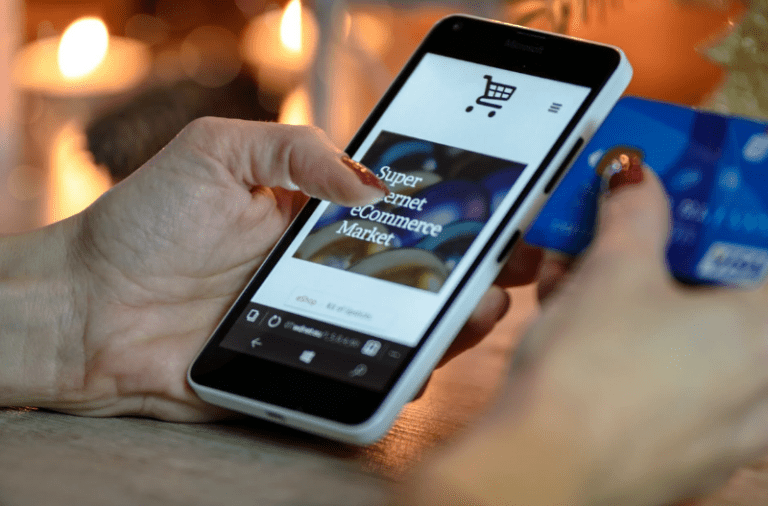To Ultimate Guide to Kickstarting Your eCommerce Journey

While the complete figures for 2021 aren’t in yet, eCommerce sales in 2020 were 32.4 percent more than the previous year.
More than ever before, shoppers are expressing a desire to move their purchases online. This isn’t simply a global phenomenon; over 22 million South Africans click “add to cart” at least once a month.
According to a Deloitte survey conducted in January 2021, only 34% of South Africans felt safe purchasing in brick-and-mortar establishments. Among the numerous reasons for moving online, health and safety has emerged as the primary driver of the shift in shopper behavior.
The explosive expansion of online commerce can be compared to a modern-day digital gold rush. Prospectors from all walks of life have jumped at the chance to develop great online companies and change the way they earn a living.
If you are one of those people, or if you want to be one of them, Jessica van der Westhuyzen, Digital & Performance Marketing Manager at OneDayOnly, has shared her three most useful insights to guarantee your eCommerce journey starts off to the best possible start in 2022.
Jessica, OneDayOnly’s Digital and Performance Manager, combines data and technology platforms to convey brand stories and develop winning growth plans. Her background includes directing teams and businesses in digital strategy, digital transformation, and the use of MarTech platforms.
1) Plan, plan, plan!
Before you start developing your website, connecting with customers on social media, or investing in Google Ads, you need have a completely fleshed out digital marketing strategy and business plan.
First off, identify the who, what, where, when, and how (WWWWH):
Who is your audience?
What are you offering them?
Where are you going to connect with them?
When are you going to connect with them?
How are you going to connect with them?
This will serve as the cornerstone for both your digital marketing strategy and your overall business plan. Begin with your goals, Unique Selling Propositions (USPs), and major objectives for each segment of your firm.
Without a well defined set of goals and a concept of your firm as a whole, it’s practically impossible to strive for success.
2) Make it a mobile-first experience.
Mobile has continually kept the top rank as the preferred web surfing medium for the majority of internet users, accounting for 54.8 percent of all online traffic as of the end of the first quarter of 2021.
As a result, you must design your website to be mobile-first.
“The word mobile-friendly suggests that your desktop-optimized site is also mobile-friendly – don’t fall into that trap!” “Even if your website just works on mobile, you’re catering to more than half of prospective traffic, so concentrate your efforts there,” Jessica recommends.
3) Quality content is king
Anyone who has worked with SEO would tell you that it is a journey. Unfortunately, no one ever ranks on the first page of Google on the first day.
While SEO success cannot be achieved quickly, the process is made much easier with a strong Content Marketing Strategy.
Content marketing is defined as “a strategic marketing approach centered on developing and distributing valuable, relevant, and consistent content to attract and maintain a clearly defined audience — and, eventually, to drive profitable consumer action” by the Content Marketing Institute. – We couldn’t have articulated it better ourselves!
In their definition, they employ three words that you should pay attention to:
Valuable: Make it valuable to your target audience. Your content marketing approach should focus on creating information that your target audience will utilize rather than just read. If your company offers running shoes, don’t only post about the shoes; also add postings about how to prepare for marathons, how to conduct warm-up/warm-down stretches, and so on. By doing so, you provide value to your clients that extends beyond your product offering.
Relevant: “Stay in your lane!” as the saying goes. When coming up with content ideas, it’s easy to become sidetracked, but you should always maintain your material in line with your brand’s primary offering. As with the last example, if you sell running shoes, keep your material running-related. A post about fragrant candles might not be appealing to your target audience.
Consistent: While it’s crucial to discover your expertise in content marketing, it’s equally important (if not more so) to guarantee that your material is disseminated consistently. Don’t confuse consistency with frequency; it’s fine to post once a month if that’s your ability, but stick to it. It’s pointless to publish every day for two weeks before disappearing for two months. Plan out your posts, create a timetable that works for you and your audience, and stick to it!
“Pro tip: Include an email subscription button on your website to keep your audience up to speed on your latest content.”
“I think that the most important thing you can do, once you’ve done all the leg work, is to trust in your hard work. Don’t try to change your strategy prematurely. Use your analytics, but don’t think that success will come overnight. It takes time – you have to remain consistent and build strong relationships. Once the dam breaks, you’ll reap the seeds you’ve sown through your hard work,” concludes Jessica.







